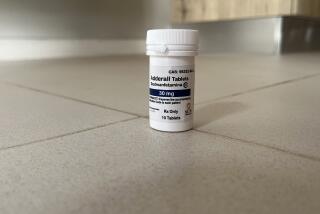EPA Is Faulted as Failing to Shield Public From Toxins
The U.S. Environmental Protection Agency is failing to protect the public from tens of thousands of toxic compounds because it has not gathered data on the health risks of most industrial chemicals, according to a report by the investigative arm of Congress to be released today.
The report by the Government Accountability Office found that chemical companies had provided health data to the EPA for about 15% of chemicals that had been introduced over the past 30 years.
In addition, the report said the EPA had sought information about health dangers for fewer than 200 of the tens of thousands of industrial compounds that had been in use since before the late 1970s.
“EPA does not routinely assess existing chemicals, has limited information on their health and environmental risks, and has issued few regulations controlling such chemicals,” the report said. The investigators concluded that the environmental agency “lacks sufficient data to ensure” that the public is protected.
About 80,000 chemicals are used by U.S. industries, and scientific studies suggest that many pose health threats, such as cancer, birth defects, altered sex hormones and damage to developing brains. Included are many substances -- such as flame retardants in furniture and electronics, phthalates in cosmetics and various chemicals in plastics -- that people are exposed to in everyday products.
The investigators recommended that Congress amend the Toxic Substances Control Act, the 1976 law that regulated industrial chemicals, to give the environmental agency more power to require companies to provide health data about chemicals and to restrict their use.
“EPA has had difficulty proving that chemicals pose unreasonable risks and has regulated few existing chemicals under TSCA,” the report said. The current law is “unlikely to address more than the most serious chemical risks,” the accountability office investigators concluded.
In recent years, tests by federal health officials and others have found that human bodies contain hundreds of chemicals. Such findings have drawn attention to the toxics law and prompted Sens. Frank R. Lautenberg (D-N.J.), James M. Jeffords (I-Vt.) and Patrick J. Leahy (D-Vt.) to ask the accountability office last year to investigate the the environmental agency’s efforts to regulate chemicals.
Lautenberg plans today to unveil the proposed Child, Worker and Consumer Safe Chemicals Act, a bill he wrote with Jeffords that would strengthen the toxics law. Rep. Henry A. Waxman (D-Los Angeles) plans to introduce the same bill in the House.
“In the GAO report, we will learn that [the toxics law] is an ineffective and burdensome law that often fails to protect our families,” Lautenberg said. “In 29 years, the agency has formally requested health information on just 200 chemicals -- out of about 80,000, according to the report.”
The findings echo the concerns of many environmental scientists and health activists.
“The existing law is broken,” said Andy Igrejas of the National Environmental Trust in Washington. “It doesn’t protect the American public from toxic chemicals. It’s arguably our weakest environmental law, and people don’t realize that.”
The law “tells EPA that before you can regulate the chemical, you have to amass enormous evidence to prove it guilty. But EPA doesn’t have the authority to get that evidence,” Igrejas said.
EPA officials, in a written response to the report, said they were “proud of the progress that we have made in protecting human health and the environment.” In the last 20 years, the agency has regulated more than 1,600 chemicals, and a similar number has been voluntarily withdrawn by companies, wrote Susan B. Hazen, the agency’s principal deputy assistant administrator. She wrote that amendments to the law were unnecessary because “the EPA believes that there is currently strong legal authority” to require testing of compounds.
Representatives of the chemical industry were unavailable for comment Tuesday. But in the past, they have said that they subject chemicals to rigorous safety tests and that a stronger law is unnecessary.
In 1998, the Chemical Manufacturers Assn., now the American Chemistry Council, initiated a voluntary program to provide information on the basic properties of about 2,800 chemicals used in high volumes. But the federal report said it was “unclear whether the program will produce sufficient information for EPA to determine chemicals’ risks to human health and the environment.”
The environmental agency has not banned any existing industrial chemical since 1989, when it tried to phase out asbestos. The asbestos ban was overturned in 1991 when a federal appeals court ruled that the EPA had not proved it was necessary to protect human health. Since then, the agency has relied mostly on voluntary efforts by chemical companies.
The report comes as Europe debates a controversial proposal, called REACH, that would require extensive testing of chemicals. The Bush administration and U.S. chemical industry have lobbied against the proposal, saying it is unworkable, would cost the industry billions of dollars and could lead to bans on important compounds.
The accountability office report does not endorse the European Union proposal. But it suggests several options for Congress to strengthen the U.S. law by requiring testing before a chemical is introduced and reducing the burden of proof needed to regulate a chemical.
Many U.S. environmental experts agree. Joel A. Tickner, associate professor at the University of Massachusetts’ School of Health & Environment, said the United States “is behind the curve” and “needs a fundamental new chemicals policy” similar to the EU proposal.
More to Read
Start your day right
Sign up for Essential California for news, features and recommendations from the L.A. Times and beyond in your inbox six days a week.
You may occasionally receive promotional content from the Los Angeles Times.






